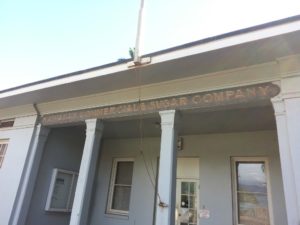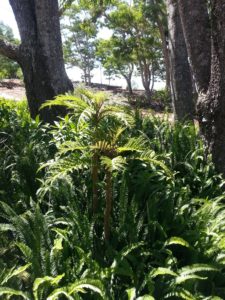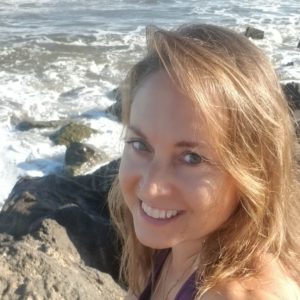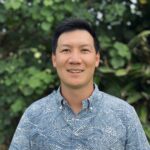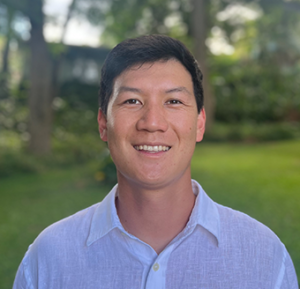Seminar 4 Day 1 – Maui
Our first day on Maui started off at Hawaii Commercial & Sugar Company, Hawaii’s last sugar plantation. We heard about everything HC&S from Rick Volner, Plantation General Manager.
 |
| Rick Volner, Plantation General Manager. |
This 37,000 acre plantation produces sugar, molasses, mud, and… labor. Rick told us about their nationally recognized apprenticeship program, training welders, electricians, mechanics, and more, providing a great opportunity for their employees to move forward in their careers.
Robert Lu’uwai, VP of Farm Operations led us on an extensive, but not long enough tour of the mill.
You could feel, hear, and smell the mill at work. HC&S has truly embraced technology, from the automation of some processes allowing for a reduction in labor costs, investment in computer software to monitor mill mechanical efficiency and safety, and use of new methods in the field.
 |
| Robert showing us the evaporators, which consume the largest amount of energy in the plant. |
Every time I pour some raw sugar in my coffee, I’ll think about all the processes involved to get to that little brown packet of sugar in Starbucks.
After returning to the meeting room, we had a few short minutes to hear from Garret Hew from East Maui Irrigation. The 75 miles of ditch and tunnel irrigation system serves not only the plantation but the Kula Ag Park and thousands of upcountry residents as well. Maui’s dependence on surface water is such a huge factor in the future of agriculture on the island.
 |
| Garret Hew of East Maui Irrigation. |
This was a great transition to our visit with Skippy Hau, Aquatic Biologist at DLNR’s Division of Aquatic Resources. The venue was perfect, nestled in the valley with ‘Iao stream flowing nearby.
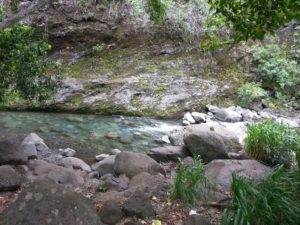 |
| ‘Iao Stream. You rarely see water that clear and clean looking on O’ahu! |
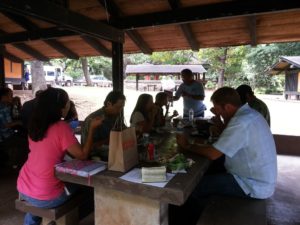 |
| Skippy Hau describing the different species of o’opu found in Maui streams. |
Skippy shared with us about the effects of channelization and stream diversion on the native biota. It’s amazing to think that aquatic fauna like o’opu, ‘opae, and hihiwai, with the effects so evident, will probably never be listed as a threatened or endangered species. He stressed that this was why stream restoration is so vital to their recovery.
 |
| Hihiwai. |
“Humans don’t have the patience to wait for change, we want it to happen all at once.”
We headed up to Makawao to the baseyard for Maui Invasive Species Committee (MISC) and the East Maui Watershed Partnership. While we waited for Dr. Leary to arrive, Chuck Chimera, Weed Risk Assessment specialist, gave us a quick tour of the small but growing native garden for use in helping determine which native species axis deer are most attracted to.
 |
| Tour of the native garden at MISC with Chuck Chimera. |
Dr. James Leary from CTAHR arrived back at the baseyard from morning in the field utilizing an innovative application method termed “Herbicide Ballistic Technology” or HBT. HBT is basically using an herbicide diluted with surfactants and encapsulated in a “paintball” applied from a helicopter. Using this method allows precise applications in hard or sometimes impossible to reach areas – this has been so important in controlling incipient populations of Miconia. What a unique and exciting strategy in controlling spread of one of Hawaii’s most invasive pests, combining surveillance and treatment! Tyler suggested adding ecotourism into that mix. I think I’ll suggest that to Dr. Leary and volunteer to be the first test subject!
 |
| Dr. James Leary describing the HBT application method. |
Dr. Leary even let us have a shot (yes, pun intended) at this “application method”, with some people showing off their shooting skills and others just wanting to hear the sound of the gun on full automatic (ahem, Jennica).
 |
| Brandi and Kirby first to give it a try. |
After returning to the yurts, we had the opportunity to hear from Teya Penniman, Manager at MISC, which receives over $1 million in funding from Maui County, by far the most of any county invasive species committee. On the top of the list for MISC is control of invasive pests such as the Little Fire Ant, Coqui frog, banana bunchy top. Teya mentioned that most instrumental in their efforts is public reporting. 643-PEST!!
Abe Vandenberg of MISC shared with us a new curriculum program available for high school teachers, providing educator workshops on the natural environment of Hawaii, exploring the different climate types Hawaii has to offer. What a great resource for Maui’s teachers! http://www.hoikecurriculum.org/
Next, we heard from Mike Tavares of the Maui Axis Deer Harvesting Cooperative. Funded through the Offices of Economic Development, this deer management program is available to the community and strives for “zero waste”, utilizing every part of the animal. It is because of this zero waste factor that MADHC has experienced little to no public resistance. Looking forward to some venison and one of those shirts!
After this exciting day, we all headed to Banyan Tree House Bed & Breakfast for the night. A great first day on Maui!










